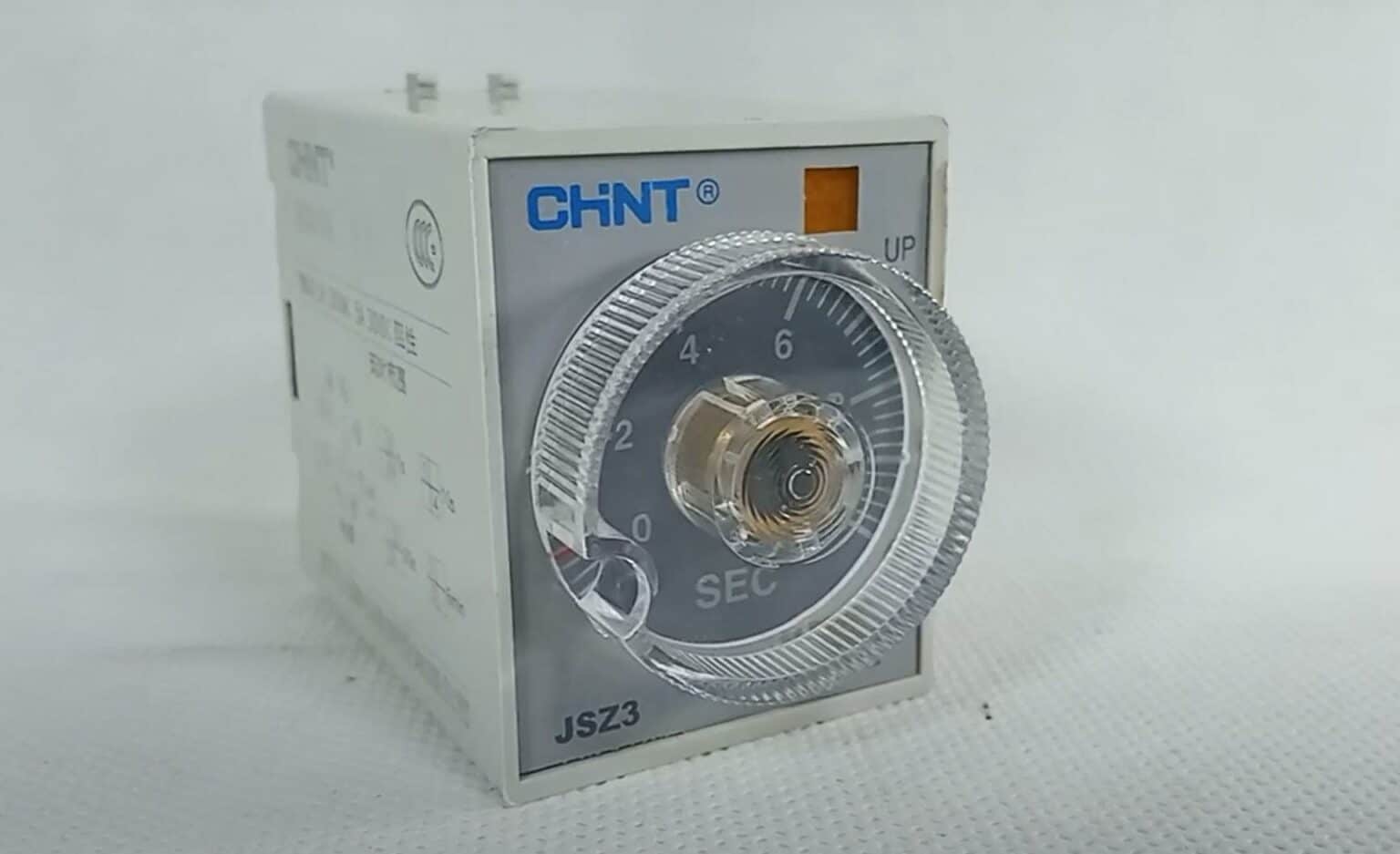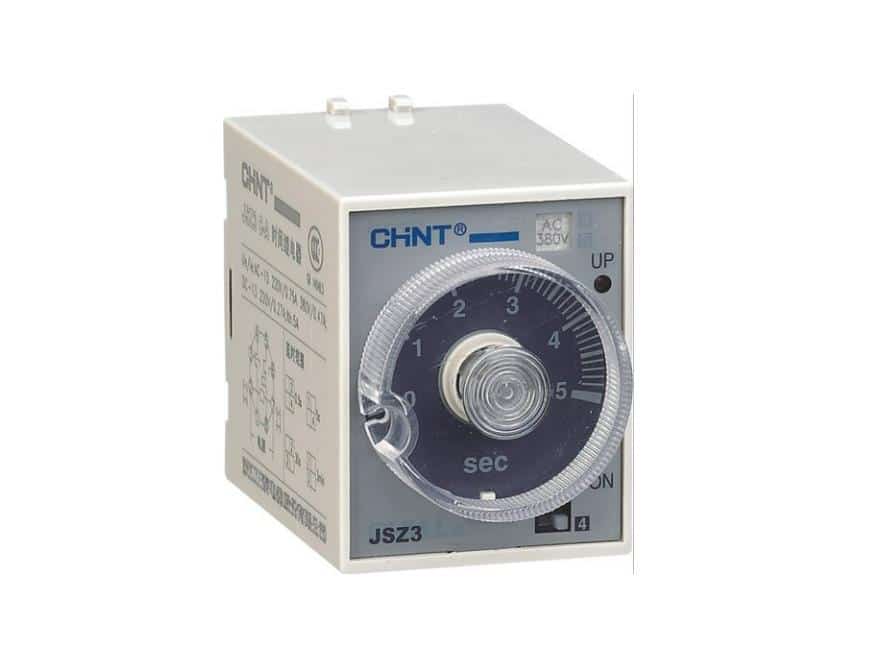Table of Contents |
What is a Time Delay Relay?
A time delay relay is a type of relay that has a built-in time delay function. This means the relay will not immediately activate when it is energized but will wait for a set amount of time before doing so. This can be useful for applications requiring delays before the relay activates, such as industrial automation or security systems.
There are many different types of time delay relays available, each with unique features and capabilities. Some relays have adjustable time delays, while others have preset time delays that cannot be changed. Additionally, some relays have multiple time ranges that can be selected, while others are limited to a single range.
Where are Timing Relays Used?
Timing relays are commonly used in a variety of industrial and commercial applications. Some common applications include machines, buildings, water segments, HVAC, and other applications.
Machine Control
They are often used in machine control applications to provide cyclic machinery switching. This can help to prevent equipment from sticking or becoming damaged.
Lighting Control
Timing relays can be used to delay switching multiple rows of lamps in production facilities or greenhouses. This can help to save energy by preventing lights from being turned on when they are not needed.
Water segments
Pump controls and irrigation systems are common applications for timing relays in the water segment.
HVAC Control
It can be used in HVAC systems to control fans and centralized water systems. This can help to save energy and keep buildings comfortable.
Alarm Triggering
Timing relays can be used to trigger alarms after a set amount of time has elapsed. This can be useful for security applications or for monitoring purposes.
These are just a few examples of where timing relays can be used. There are many other potential applications for these versatile devices.
Types of Time Delay Relay
ON-Delay Timers
An ON-delay timer is a type of time delay relay used to control the activation of a circuit by delaying the initiation of current flow. ON-delay timers are typically used in applications where it is important to ensure that a circuit is not activated until after a certain amount of time has elapsed. This can help prevent accidental circuit activation or allow time for a system to stabilize before it is activated.
OFF-Delay Timers
OFF-delay timers are a type of time delay relay that opens or closes the circuit as soon as power is removed. The contacts will not return to their normal position until the preset time delay has elapsed, at which point the load is de-energized. OFF-delay timers are often referred to as “delay on break” timers.
If you were to close the control switch again during timing, it would reset the time delay; however, most OFF-delay timers automatically reset when power is lost, but some models allow for manual resetting.
One Shot Timers
One-shot timers are a time delay relay used to activate a circuit after a set amount of time has passed. They are also called single shot timers, single shot interval timers, and single pulse timers. One-shot timers are activated by power. As soon as power is applied, the contacts move to a different position.
They stay in this new position for the time previously set and then return to their original spot. The timer starts over when the previous cycle is completed, and the switch controlling it is turned off. One-shot timers are often used in industrial settings, such as operating machinery start/stop buttons.
Interval Timers
Interval timers are a time delay relay used to control the length of time an electrical load is energized. They are also called pulse shaping timers, bypass timing timers, interval delay timers, and delay on energization with instantaneous transfer timers.
These kinds of timers work by delaying the application of power to an electrical load until a specific time has elapsed. Once the timer has elapsed, the power is applied and remains on until the timer expires. At this point, power is removed from the load and remains off until power is reapplied.
Recycle Timers
Recycle timers are a type of time delay relay used to control a load’s on and off cycling. They are also called duty cycling or cycle timers. These timers conserve energy by turning a load off and on at regular intervals. They can also be used to create a flashing effect. Recycle timers are either single-function or multi-function devices.
CHINT Time Delay Relay
NJS1 Time Delay Relay
The NJS1 time-delay relay is an electronic device used to control circuits. It is specifically designed for AC 50Hz/60Hz power supplies and can handle voltages up to 380V. The relay has a power consumption of less than 3VA and an electrical life of 1×10(5). It also has a mechanical life of 1×10(6) and can operate in temperatures ranging from -5 degrees Celsius to +40 degrees Celsius.
The NJS1 Time Delay Relay can be used in several ways. For example, it can control motors, lighting, or other electrical devices. It can also be a safety feature in applications where a delay is needed before a circuit is activated.
JSZ3 Time Delay Relay
JSZ3 Time Delay Relay is a kind of advanced electric relay. It adopts microcomputer control, has the function of time delay, and can be widely used in complete equipment automatic control, automatic control system, and machine automatic control.
The JSZ3 Time Delay Relay is a great option for those looking for a precision timer. With a delay precision of less than equal to 10%, it is perfect for a wide range of applications. The ambient temperature range of -5 degrees C to +40 degrees C also makes it suitable for various settings.
Additionally, it can be installed in equipment, panel, or DIN-rail installations, making it adaptable to many different situations.
Conclusion
Time delay relays control circuits’ activation after a set amount of time has passed. There are various time delay relays, each with specific uses. Some common applications for time delay relays include controlling the start and stop of machines, controlling the on and off cycling of a load, and delaying the activation of a circuit.
CHINT is a company that specializes in manufacturing time delay relays. Our products are designed for use in a variety of settings and applications. Some of our most popular products include the NJS1 Time Delay Relay and the JSZ3 Time Delay Relay. Both of these products are highly adaptable and offer great precision. If you are in the market for a time delay relay, CHINT is a great option to consider.
If you have any questions or need further assistance, don't hesitate to reach out to us.



















